Free shipping on orders over $200 in Canada.
- Shop
Brands
- Acca Kappa
- Acqua dell'Elba
- Alpen
- Carthusia
- Casa Amalfi
- Cella Milano
- Farmacia SS. Annunziata
- LAC Cereria
- La Florentina
- Lorenzo Villoresi
- Mario Fissi
- Marvis
- Officina delle Essenze
- Omega
- Profumitalia
- Proraso
- Rudy Profumi
- Saponificio Artigianale Fiorentino
Fragrance Family
For Her
- Bath Accessories
- Bath & Shower
- Beauty Tools
- Body Care
- Dental Care
- Deodorant
- Face Care
- Fragrance
- Fragrance Atomizer
- Fragrance Samples
- Gift Sets
- Hair Care
- Hand Care
- Lip Care
- Nail Care
- Soap
- All For Her
For Him
- Bath Accessories
- Bath & Shower
- Beard Care
- Body Care
- Dental Care
- Deodorant
- Face Care
- Fragrance
- Fragrance Atomizer
- Fragrance Samples
- Gift Sets
- Grooming Tools
- Hair Care
- Hand Care
- Handkerchiefs
- Lip Care
- Nail Care
- Shaving
- Soap
- Toiletry Bag
- All For Him
For Home
- Accessories
- Beads, Crystals, Stones
- Candles
- Closet Fresheners
- Diffusers
- Fabric Sprays
- Greeting Cards
- Liquid Soap
- Potpourri
- Room Essence
- Room Sprays
- All For Home
Gift Card
- Brand Stories
- Blog
- Explore Italy
- Shop
Brands
- Acca Kappa
- Acqua dell'Elba
- Alpen
- Carthusia
- Casa Amalfi
- Cella Milano
- Farmacia SS. Annunziata
- LAC Cereria
- La Florentina
- Lorenzo Villoresi
- Mario Fissi
- Marvis
- Officina delle Essenze
- Omega
- Profumitalia
- Proraso
- Rudy Profumi
- Saponificio Artigianale Fiorentino
Fragrance Family
For Her
- Bath Accessories
- Bath & Shower
- Beauty Tools
- Body Care
- Dental Care
- Deodorant
- Face Care
- Fragrance
- Fragrance Atomizer
- Fragrance Samples
- Gift Sets
- Hair Care
- Hand Care
- Lip Care
- Nail Care
- Soap
- All For Her
For Him
- Bath Accessories
- Bath & Shower
- Beard Care
- Body Care
- Dental Care
- Deodorant
- Face Care
- Fragrance
- Fragrance Atomizer
- Fragrance Samples
- Gift Sets
- Grooming Tools
- Hair Care
- Hand Care
- Handkerchiefs
- Lip Care
- Nail Care
- Shaving
- Soap
- Toiletry Bag
- All For Him
For Home
- Accessories
- Beads, Crystals, Stones
- Candles
- Closet Fresheners
- Diffusers
- Fabric Sprays
- Greeting Cards
- Liquid Soap
- Potpourri
- Room Essence
- Room Sprays
- All For Home
Gift Card
- Brand Stories
- Blog
- Explore Italy
Ciao Italia
Explore la bellezza of Italy
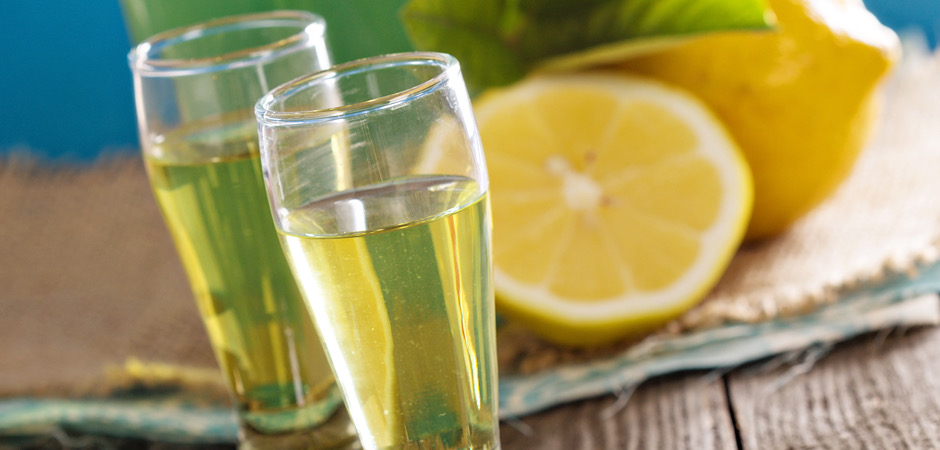
Explore la bellezza of Italy.
In the realm of spirited beverages, few can match the vibrant allure and refreshing zest of limoncello. Originating from the sun-kissed Amalfi Coast of Italy, this lemon liqueur embodies the essence of Mediterranean summers in a single sip.
Limoncello is not just a drink; it’s a celebration of Italy’s rich culinary heritage and its history for transforming simple ingredients into exquisite flavours. Made primarily from the zest of Sorrento lemons, alcohol, water, and sugar, limoncello dazzles with its bright yellow hue and intense citrus aroma. Each sip unfolds with a burst of tangy sweetness that lingers delicately on the palate, leaving a refreshing finish that is both soothing and invigorating.
What sets limoncello apart is its craftsmanship. The best varieties are often made in small batches, ensuring the highest quality and attention to detail. The process begins with meticulously selecting the finest lemons, ideally from Sorrento or the Amalfi Coast, renowned for their thick, fragrant peel. These are carefully hand-peeled to avoid bitter pith, and then steeped in pure alcohol to extract their essential oils. The resulting infusion is blended with simple syrup, creating a harmonious tonic that captures the essence of fresh lemons in every drop.
Beyond its delectable taste, limoncello embodies the spirit of Italian hospitality. It’s a drink that brings people together, whether shared over a leisurely meal with loved ones or offered as a gesture of warmth and welcome to guests.
So, raise a glass and savour the taste of Italian sunshine—it’s a journey worth embarking on. Salute!
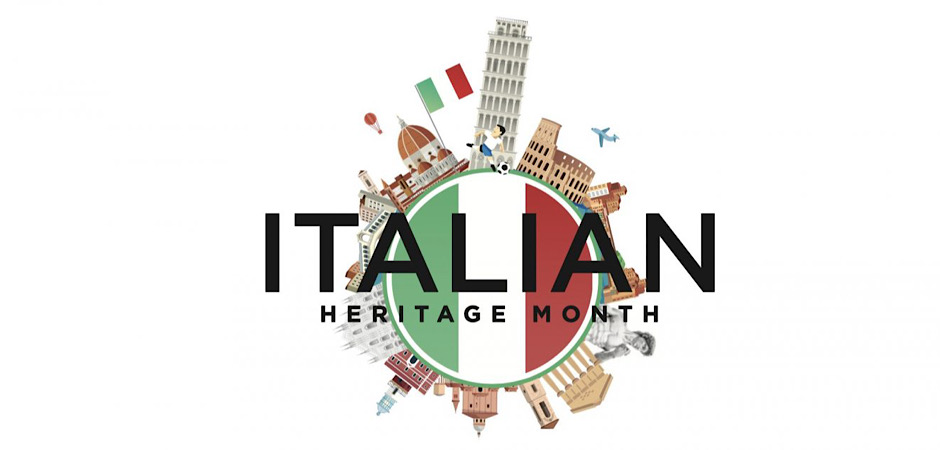
Explore la bellezza of Italy.
Canada's cultural landscape is woven with threads from around the world, and one vibrant strand that stands out is Italian heritage. Every June, Canadians proudly celebrate Italian Heritage Month, a time to honour the contributions, traditions, and rich cultural tapestry of the Italian community in Canada.
Across major Canadian cities, you’ll discover beloved Little Italy neighbourhoods. These vibrant areas have evolved over generations, offering a taste of Italy through food, music, and community spirit. From Toronto to Montreal, these neighbourhoods are cherished hubs where Italian culture thrives.
Italian Canadians have made significant contributions in various fields:
- Culinary Arts: Italian cuisine has left an indelible mark on Canadian food culture. From pizza to pasta, our taste buds owe much to Italian culinary traditions.
- Music: Italian melodies resonate throughout Canada. Whether it’s opera, classical music, or contemporary tunes, Italian musicians have enriched our cultural landscape.
- Business: Italian entrepreneurs have established successful businesses, contributing to Canada’s economic growth.
- Education: Italian Canadians have excelled in academia, fostering knowledge and innovation.
- Science: Scientists of Italian descent have made breakthroughs in various scientific disciplines.
- Sports: From soccer to ice hockey, Italian athletes have left their mark on Canadian sports.
As we celebrate Italian Heritage Month, it's essential to recognize the importance of preserving traditions and passing them down to future generations. Through cultural events, educational initiatives, and community outreach programs, Italian Canadians strive to ensure that their heritage remains alive and vibrant.
Buon Italian Heritage Month!
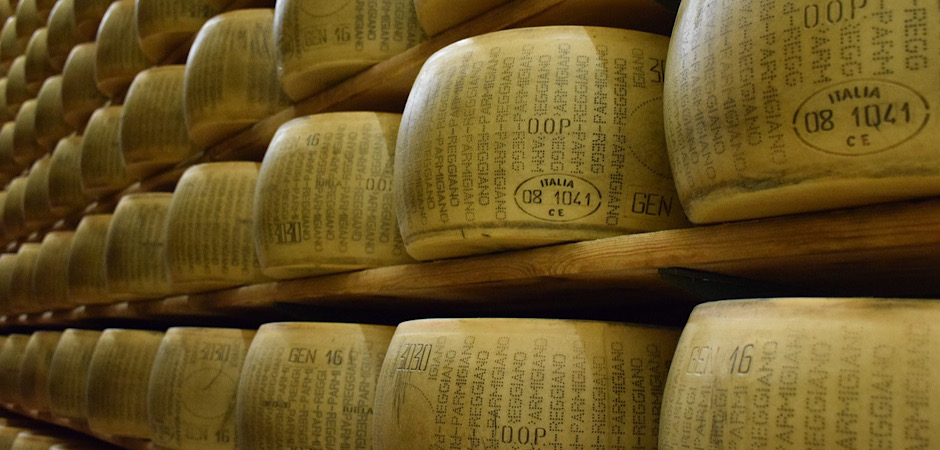
Explore la bellezza of Italy.
In the vast and diverse world of cheeses, there's one that stands out – Parmigiano Reggiano. Known for its unmistakable flavour, rich history, and rigorous production standards, Parmigiano Reggiano has earned its place as one of the most revered cheeses.
Originating in the regions of Parma, Reggio Emilia, Modena, and parts of Bologna, and Mantua, this cheese has a protected designation of origin (PDO), ensuring that only cheese produced in these specific areas can bear its esteemed name. The PDO status safeguards the cheese's authenticity and guarantees adherence to stringent production standards. Cheese wheels are aged between 24 and 36 months, with many aging for much longer to develop their complex flavours.
Parmigiano Reggiano boasts a range of distinctive characteristics that set it apart from other cheeses. It boasts a flavour profile characterized by nuttiness, sweetness, and savoury notes – making Parmigiano Reggiano a versatile cheese that can be enjoyed on its own or used to enhance a variety of dishes.
Whether grated over pasta, shaved onto salads, or enjoyed on its own with a glass of vino, Parmigiano Reggiano elevates any dish with its unmatched depth of flavour. Its quality, tradition, and craftsmanship make it a true culinary treasure.
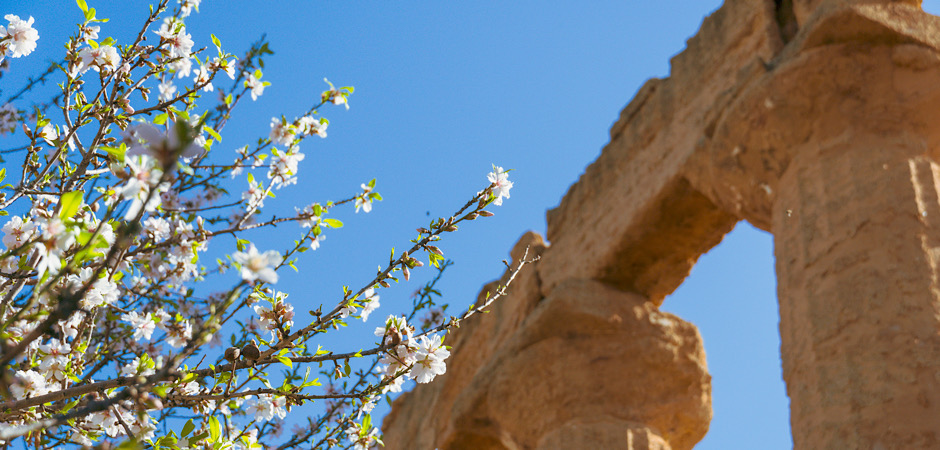
Explore la bellezza of Italy.
During spring, Rome transforms into a canvas of pink and white blooms. Rome's cherry blossom display is a breathtaking spectacle not to be missed.
In Rome, the arrival of cherry blossoms symbolizes renewal, hope, and the promise of brighter days ahead. It's a time when nature awakens from its slumber, infusing the city with a sense of vitality and optimism.
From the iconic Spanish Steps to the tranquil gardens of Villa Borghese, cherry trees dot the landscape, creating picture-perfect settings for leisurely strolls and contemplative moments.
In springtime, Villa Borghese Gardens undergo a magical transformation as cherry blossoms blanket the pathways in a flurry of pink and white petals. Take a leisurely walk around the lake, and pause to admire the blooming trees.
Tucked away on the Aventine Hill, Rome's Rose Garden is a hidden gem waiting to be discovered. While roses are the main attraction here, the garden also boasts a charming collection of cherry trees that burst into bloom in April. Don't forget to climb the hill for a panoramic view of the city framed by blossoming trees.
In Trastevere, you’ll encounter cascading cherry blossoms along the winding streets. These blooms add a dreamy charisma to this bohemian neighborhood.
In a city steeped in history and splendor, the arrival of cherry blossoms reminds us to pause, breathe, and appreciate the simple joys of nature's beauty. Whether you’re sipping espresso by the Tiber River or strolling through historic alleys, Rome’s cherry blossoms promise an unforgettable experience.
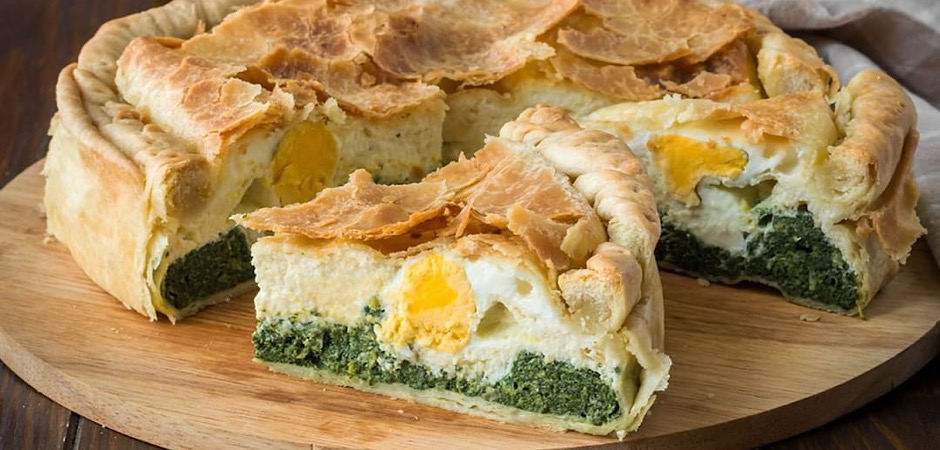
Explore la bellezza of Italy.
Easter in Italy is not merely a religious holiday; it's a cultural extravaganza deeply rooted in traditions that have been passed down through generations. From solemn religious observances to joyous feasts and lively festivities, Easter, or Pasqua in Italian, is a significant event that brings communities together in vibrant displays of faith, heritage, and culinary delights.
Italians decorate their homes and churches with symbols of Easter. Traditional decorations include colourful Easter eggs and fragrant flowers such as lilies and tulips. In some regions, intricate "palm crosses" made from palm leaves are carried in processions on Palm Sunday, and displayed in homes.
Food plays a central role in Italian Easter celebrations, with each region boasting its own culinary specialties. One ubiquitous treat is the Colomba di Pasqua, a dove-shaped Easter cake made with candied fruits and almonds. Another classic is the savory Torta Pasqualina, a flaky pastry filled with ricotta cheese, spinach, and eggs.
Easter is a time for families to come together and share in the joy of the season. In many households, Easter Sunday begins with a lavish breakfast featuring an array of delicacies, including cured meats, cheeses, and freshly baked bread. Following Mass, families gather for a leisurely lunch, typically featuring roast lamb.
The festivities continue beyond Easter Sunday with Pasquetta, or Little Easter, celebrated on Easter Monday. Pasquetta is often spent outdoors, with families enjoying picnics in the countryside or seaside outings. It's a time for relaxation and hospitality, as Italians savour the lingering joys of Easter surrounded by loved ones.
Happy Easter! Buona Pasqua!
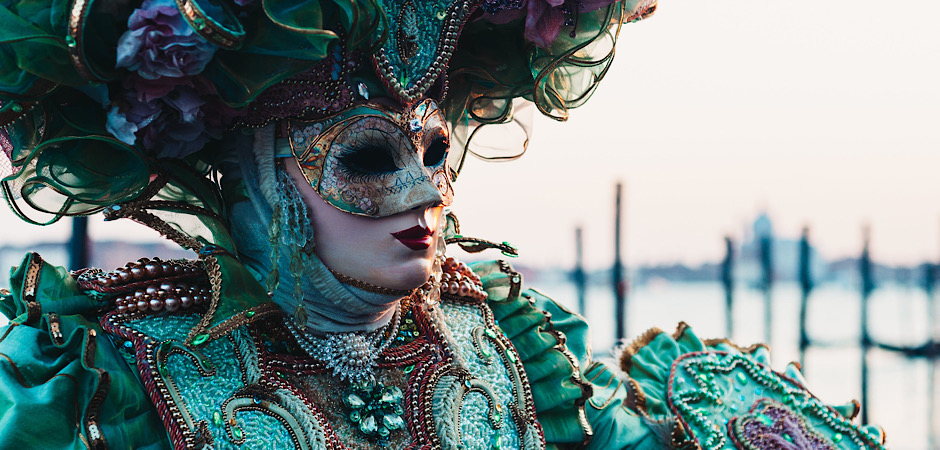
Explore la bellezza of Italy.
In Italy, the month of February is the celebration of Carnival or carnevale, which is a lively and colourful festival held in the weeks leading up to Lent.
Carnival traditions vary across different regions of Italy, but some common elements can be found throughout the country. If you’re lucky enough to be in Italy in February, make sure you enjoy some of these traditions.
Venice Carnival (Carnevale di Venezia): The Venice Carnival is one of the most famous and elaborate Carnivals in the world. It is known for its stunning masks and costumes. People wear decorative masks, along with traditional 18th-century clothing. The city is filled with parades, masquerade balls, and various events.
Viareggio Carnival: Held in the coastal town of Viareggio in Tuscany, this Carnival is renowned for its gigantic and artistic parade floats. The floats often satirize political figures and current events, providing a humorous and satirical aspect to the celebration.
Putignano Carnival: Located in the town of Putignano in Puglia, this Carnival is one of the oldest in Italy, dating back to the 14th century. It features parades, music, and various events, including the election of the Carnival King.
Masked Balls and Parades: Throughout Italy, especially in cities like Rome and Florence, there are masked balls and parades during the Carnival season. These events often feature traditional music, dance, and elaborate costumes.
Traditional Foods: Carnival is also a time for indulging in festive and traditional foods. In many regions, you'll find special sweets such as chiacchiere (fried dough strips) or migliaccio (ricotta and lemon cake).
Costume Parties: People of all ages, especially children, participate in costume parties during the Carnival season. It's a time for dressing up in colourful costumes, wearing masks, and enjoying a festive atmosphere.
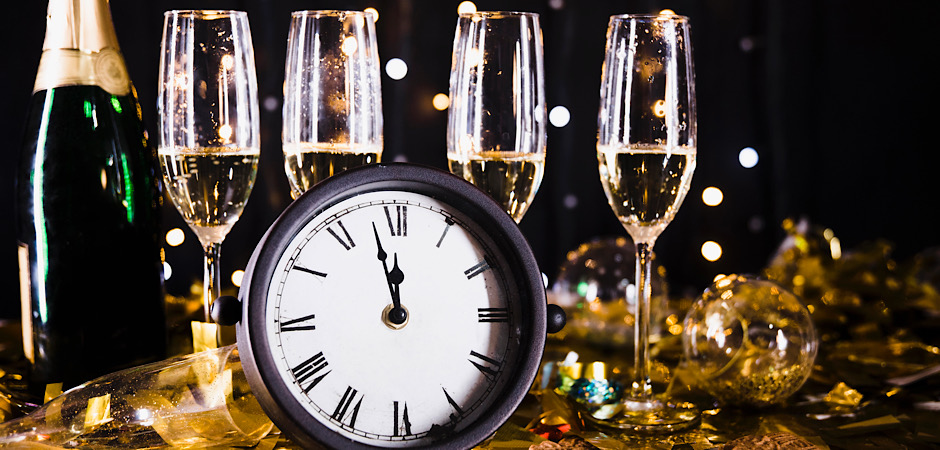
Explore la bellezza of Italy.
In Italy, New Year’s Eve or capodanno is celebrated with traditions to bring in good luck and wealth for the coming year.
As with many celebrations in Italy, food is always at the centre of the festivities. Family and friends gather to enjoy a meal together. And on many tables you will find lentils which are believed to bring good luck and prosperity.
In northern Italy, risotto is served as a first course to encourage prosperity in the coming year. On many tables you will find cotechino (pork sausage) – cotechino slices look like round medallions and coins, a good omen for wealth.
Another custom is to eat a grape at each ring of the midnight bell, twelve in all, to banish bad luck for the coming twelve months. Dried fruit such as figs are also eaten to bring good luck. Another popular fruit enjoyed on New Year’s Eve is pomegranate, which symbolizes loyalty and fertility.
A traditional holiday dessert is the Neapolitan classic, struffoli — marble-sized fried dough balls dipped in honey, piled into a mound, and topped with sugar and candied fruit — a symbol of abundance and money.
A fun tradition is to wear red undergarments because the colour red is thought to symbolize fertility and fortune.
In cities and towns across Italy, at the stroke of midnight, colourful fireworks fill the sky. Today, fireworks are used for celebrations, but historically, in Italy, they were used to drive away evil spirits and welcome a fresh start.
Whatever traditions you enjoy to welcome the New Year we wish you a Buon Anno!
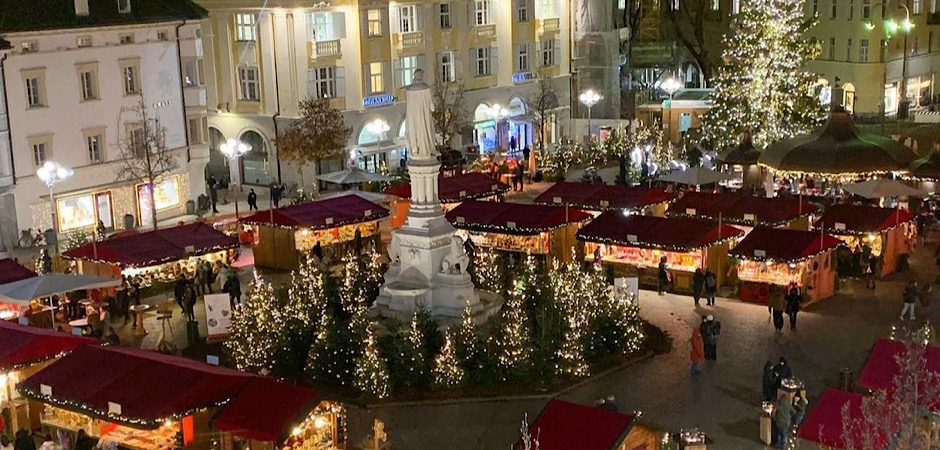
Explore la bellezza of Italy.
If you’re lucky enough to be in Italy during the Christmas season, you will definitely get into the holiday spirit by visiting one of the many Christmas markets in Italy.
One of the largest Christmas markets in Italy is the Bolzano Christmas Market. It is held in Piazza Walther, in the town of Bolzano, in the province of South Tyrol. Approximately 100 stalls participate and everything on display in the market must be produced or processed in South Tyrol. Pick up some handmade stocking stuffers and enjoy gastronomic specialties from the mountain farms. You will also be entertained by numerous concerts and performances.
The Arco Christmas Market is located in the north of Lake Garda, in the Trentino-Alto Adige region of northern Italy. There are 50 stalls offering various artistic products and local delicacies. There is a nice mix of entertainment for the whole family including fireworks, street artists and a Christmas train with Santa.
Did you know that the tradition of the Nativity Scene originated in Naples? If you visit the Naples Christmas Market you will see intricately designed Christmas cribs. Stop by ancient Neapolitan bakeries and enjoy stuffoli, susamelli or rococo. The city is ignited with colourful lights and the streets are filled with musicians and parades.
The Montepulciano Christmas Village is one of the largest markets in Italy. It is held in Piazza Grande, in the province of Siena in southern Tuscany. With stalls, street food vendors, and entertainment, there is no shortage of Christmas cheer.
The Verona Christmas Market is held in Piazza dei Signori, in the Veneto region of northern Italy. Verona partners with Nuremberg, for an international pavilion, with vendors who bring a taste of Germany to Verona. Don’t forget to enjoy pandoro, the famous Christmas cake, which was created in Verona, in 1894, by the baker Domenico Melegatti.
The Rome Christmas Market is held in the popular Piazza Navona, in the Lazio region in central Italy. The market is filled with stalls, food trucks and a carousel, not to mention Christmas cheer.
One of the largest Christmas markets in Florence, is held in Piazza di Santa Croce, in Tuscany. It is inspired by the tradition of the German city of Heidelberg. The 55 stalls house a mixture of Italian and German delicacies and some one-of-a-kind gifts.
These are just a few of the many Christmas markets sprawled throughout Italy, for you to surely have a Buon Natale!
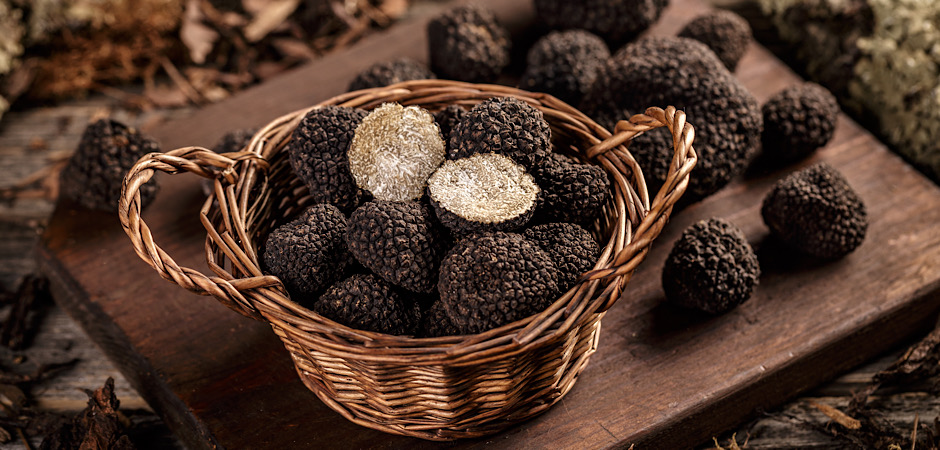
Explore la bellezza of Italy.
Do you like truffles? If you’re heading to Italy in November, you just might want to visit one of the many truffle – tartufo – festivals throughout Italy.
Truffles are one of Italy’s most famous ingredients and considered a delicacy all around the world. Truffles are edible fungi or tubers that grow underground. They are similar to mushrooms, but mushrooms grow above ground.
Although there are over 100 different species of truffles, the vast majority of truffles are not edible. In Italy, the law allows for the collection and sale of nine species of truffles.
The most common and versatile of truffles, the black truffle – tartufo nero – can be found in woods, meadows, and mountains of Umbria and Tuscany. Black truffle season is from December to March.
The white truffle – tartufo bianco – is considered the rarer and the luxury truffle. White truffles can only be found by trained truffle hunting dogs. White truffle season is from September to December when they grow wild in the forests near the city of Alba in the Piedmont region.
In terms of taste, truffles taste similar to mushrooms yet are more intense and fragrant. White truffles have a hint similar to garlic with notes of pepper. Black truffles have more of a nutty flavour.
Typically, truffles are thinly shaved on pasta dishes, risotto, sauces, or grated over seafood or meat.
Buon appetito!

Explore la bellezza of Italy.
Did you know that grappa has been around since the middle ages? The liqueur is traditionally enjoyed as an after-dinner drink especially during the fall and winter months. Originally known as a poor man’s drink, today grappa is enjoyed by all.
The name grappa comes from the Latin grappapolis, which means a bunch of grapes. Grappa is made by distilling the pomace (a blend of grape seeds, skins and stems) leftover from the wine fermentation which makes grappa naturally sustainable.
Grappa is a protected name under European law. In order to be called “grappa” it must be produced in Italy and made entirely from pomace following a specific distillation method.
Grappa is classified based on type of grape, age and aroma.
Giovane (Young) grappa is bottled after a short rest in steel tanks.
Invecchiata (Aged) grappa matures in oak barrels for 12 to 18 months, taking on a light golden colour and a more rounded character with hints of spices and vanilla.
Barricata (Barricaded) grappa is aged for 12 months, at least 6 months in small casks named Barrique. The grappa is tannic with a deep golden colour and rich flavours of tobacco, butter and cream.
Stravecchia or Riserva (Very Old) grappa is aged in oak barrels for more than 18 months. It takes on a golden amber colour and intense flavors of spices and vanilla.
Grappa should be served either at room temperature or slightly chilled in a shot or nosing glass as noted above, as an after-dinner liqueur. In Italy, you will also see people pair grappa with an espresso.
And to that we say, “Cin Cin!”
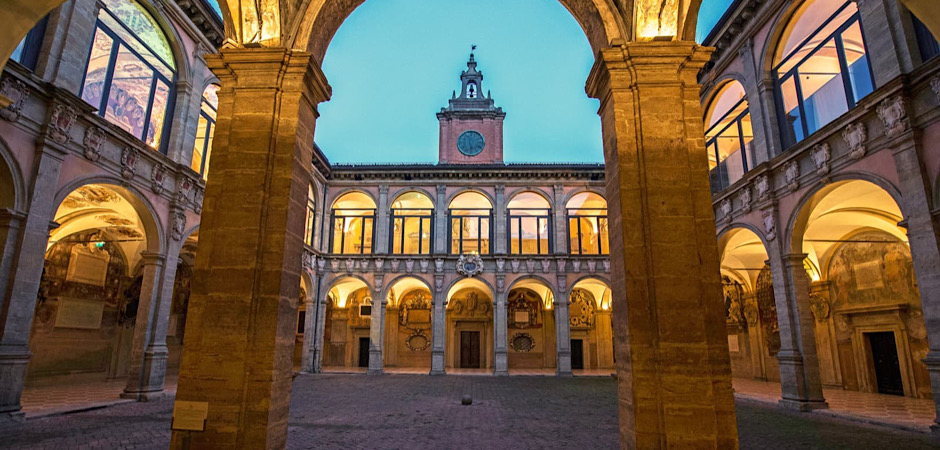
Explore la bellezza of Italy.
Did you know that the oldest university in the world is in Bologna, Italy? Founded in 1088, the University of Bologna has never been out of operation. Interesting to note, it was not founded by a group of teachers but by a guild of students.
The University of Bologna is one of the most prestigious universities in Italy, and Europe. With over 90,000 students, it is also one of the largest universities in Europe. The university's motto Alma Mater Studiorum, which means Nourishing Mother of Studies, is part of its emblem.
Historically, the university was known for its teaching of law. In the 13th century, the faculties of medicine and philosophy were formed. In the 17th century, the faculty of science was developed. Today, the university is made up of 31 departments and five schools, as well as 98 libraries and 15 museums and collections.
The University of Bologna boasts a long list of famous graduates. Their list includes individuals such as, poet Torquato Tasso; playwright Carlo Goldoni; famous astronomer Niccolò Copernico, and Thomas Becket, who became a well-known Catholic archbishop.
You don’t have to be a student to appreciate the history of the University of Bologna. If you visit Bologna, make it a point to tour the grounds of the university. The university offers many self-guided tours of the architecture, monuments and museums.
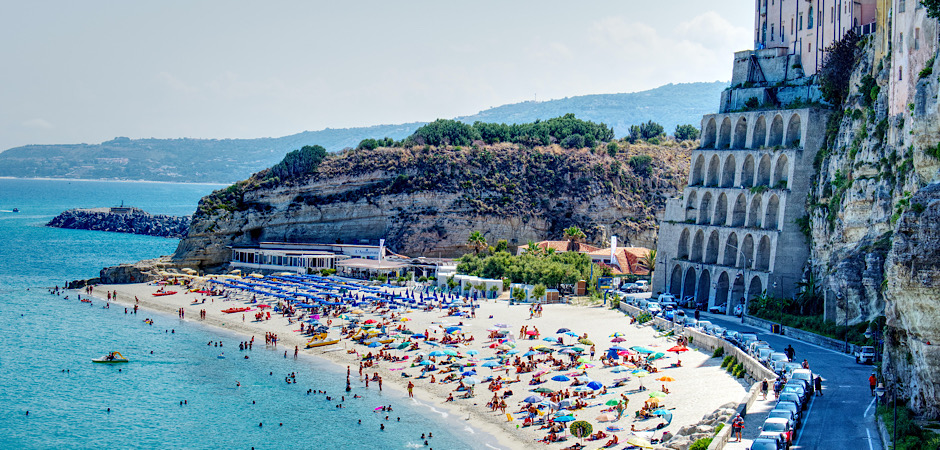
Explore la bellezza of Italy.
August is officially the start of summer vacationing in Italy. In fact, August 15th is known as Ferragosto – a national holiday that sees Italians escape to the beaches or mountains with family or friends.
If you are lucky enough to be in Italy in August, there are no shortages of beaches to enjoy and the following are some of the most popular spiagge in Italy.
Chia Beach, Sardinia. Sardinia is an island in the Mediterranean Sea, located west of the Italian Peninsula. Chia Beach water is turquoise and the sand is golden. Juniper trees overlook the beach and you can spot flamingos in the lagoon.
San Fruttuoso, Liguria. Liguria is a region in north-western Italy. San Fruttuoso beach is surrounded by lush vegetation. Divers come to San Fruttuoso to see the statue of the Christ of the Abyss, which in 1954, was placed in the water at a depth of 18 metres.
Tropea Beach, Calabria. Calabria is a region in Southern Italy. Tropea beach has white sand and emerald-green water. Santa Maria dell’Isola, an ancient medieval monastery, overlooks the beach.
Follonica Beach, Tuscany. Tuscany is a region in central Italy. Follonica Beach is popular for its fine sand and calm waters. Overlooking the island of Elba, the beach is backed by green hills and surrounded by nature reserves and Etruscan ruins.
Arienzo Beach, Amalfi Coast. Amalfi Coast is a coastline in southern Italy, overlooking the Tyrrhenian Sea. Located in beautiful Positano, you will need to descend 300 steps to get to the Arienzo beach.
So grab a towel, sunscreen and some sparkling water and enjoy your dip!
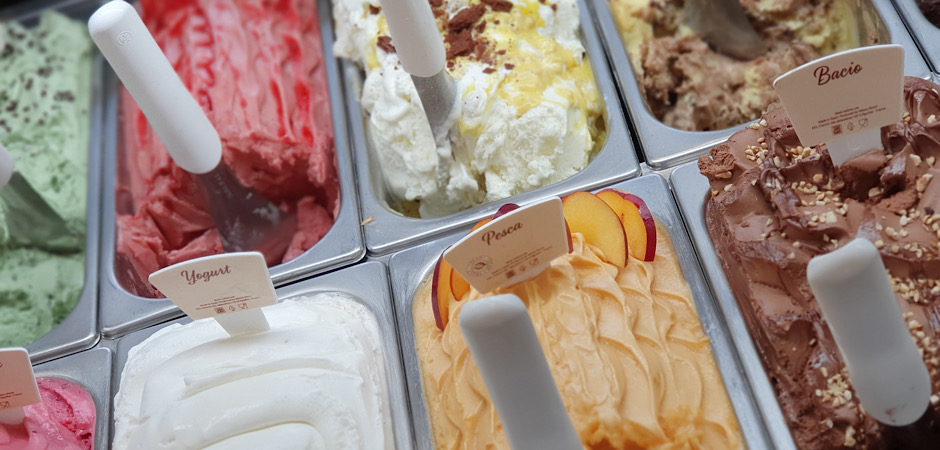
Explore la bellezza of Italy.
If you walk through the cobblestone streets and piazzas in Italy, you will undoubtedly see people of all ages enjoying a cone or cup of gelato.
The term gelato refers to ice cream, but the actual word in Italian means frozen. Gelato and ice cream are both creamy frozen treats that contain milk, cream, sugar and flavorings. Gelato uses more milk and less cream than ice cream and generally doesn’t use egg yolk, which is a common ingredient in ice cream.
Gelato is also denser than ice cream. While ice cream can have 50 percent or more air churned into it, gelato has 20 to 30 percent. Gelato is also served 10 to 15 degrees warmer than ice cream so the warmer temperature reinforces the creamy texture of the gelato and the bold flavours.
As for gelato flavours, you can enjoy cioccolato, fragola, limone, stracciatella, pistachio, fior di latte, nocciola, and Tiramisù, just to name some of the more popular flavours.
If you like espresso, you may also want to try an affogato. Affogato means drowned in Italian. You simply pour espresso over a cup of vanilla gelato, and enjoy.
When you are in Italy, there is no shortage of places to buy gelato. There are over 39,000 gelato shops in Italy (10,000 pure gelaterias and 29,000 bars and pastry shops serving gelato).
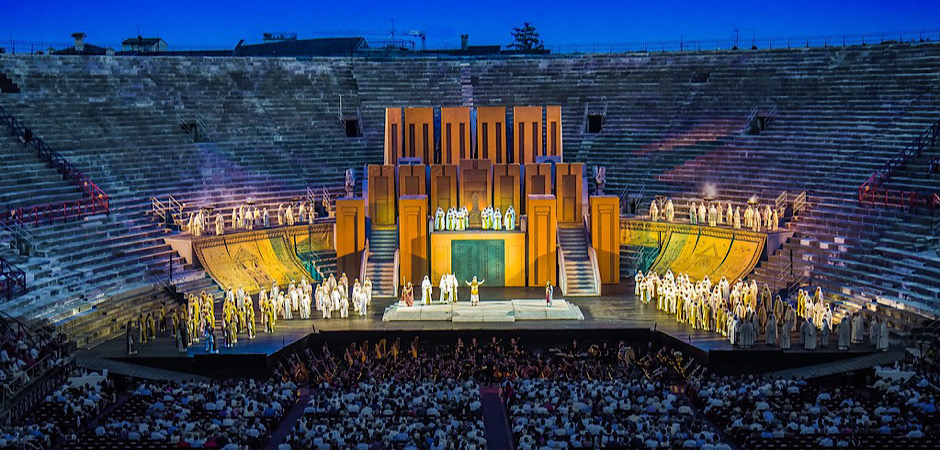
Explore la bellezza of Italy.
If you’re lucky to be in Italy between June and September, and you love the opera, then get yourself a ticket to the Opera Festival at the Arena di Verona.
This year marks one hundred years of opera in the Arena di Verona. The Opera Festival began on August 10, 1913, with the first performance of the opera, Aida organized by tenor Giovanni Zenatello, and the impresario Ottone Rovato.
The Verona Arena is a Roman amphitheatre built in 30 AD. It is located in Piazza Bra, in Verona, and is still in use today. It is one of the best preserved amphitheatres in the world. The Verona Arena is internationally known for its large scale opera productions.
In ancient times, the Amphitheatre could hold up to 30,000 spectators but today, with staging, it has a capacity of 22,000. Every year, over 500,000 opera lovers see productions of the most popular operas in the Arena di Verona.
For the 100th Anniversary of the Opera Festival, from June 16 to September 9, 2023, you can see: Aida by Giuseppe Verdi; Carmen by Georges Bizet; Il Barbiere di Siviglia by Gioachino Rossini; Rigoletto by Giuseppe Verdi; La Traviata by Giuseppe Verdi; Nabucco by Giuseppe Verdi; Tosca by Giacomo Puccini; and Madama Butterfly by Giacomo Puccini. What an extraordinary line-up of operas! Bravo!
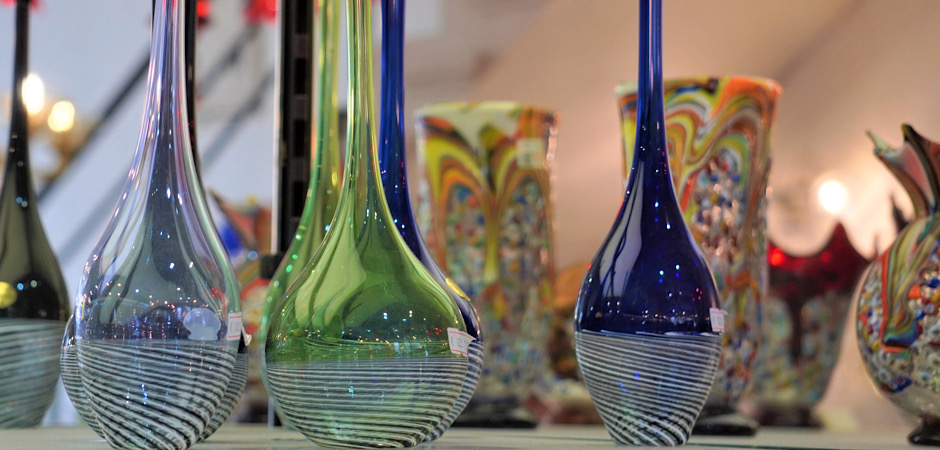
Explore la bellezza of Italy.
If you travel to Venice, a must stop is a visit to the island of Murano, renowned for its long tradition of glassmaking.
Venetian glassmaking originated over 1,500 years ago. By the late 1200s, glassmaking was Venice’s primary industry. To outline regulations for the industry, a Glassmakers Guild was established and caused a law to be passed that would mandate all glassmakers to move from Venice, to the island of Murano.
Artisans working in the glass trade were well rewarded for their efforts. They were treated as prominent citizens and enjoyed social status and lifestyle.
One of the advantages of having glassmakers in close proximity to one another was the ability to share innovations and techniques such as the creation of cristallo—a fine, almost transparent glass—and lattimo, a porcelain-like milk glass.
From stunning glass chandeliers to drinking glasses, to colourful glass beads for jewellery, Venetian glass was continually reinvented to follow style trends and interests.
Today, Murano glassmakers continue to produce many types of glass works from the classic styles to bold contemporary pieces. Murano glass is a recognized art form and each glass piece is an original creation made by hand according to the ancient tradition.
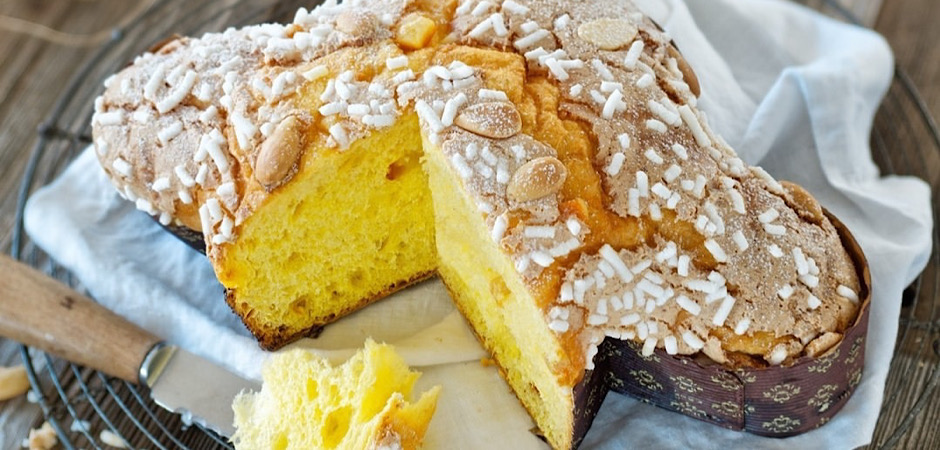
Explore la bellezza of Italy.
The Easter colomba is Italy’s popular Easter sweet bread. It’s the counterpart of the Christmas panettone but in the shape of a dove – and dove in Italian is colomba.
It is traditionally made with quality flour, fresh eggs, sugar, butter, and natural yeast. After rising for at least 30 hours, the dough is then baked into the iconic dove shape and finally topped with sugar and almonds.
The colomba dates back to the 1930s to Motta, a company in Milan, owned by baker and businessman, Angelo Motta. Motta was already famous for its Christmas panettone.
Although originating in Milan, the Easter colomba is sold in shops and bakeries throughout Italy. Wrapped in beautiful packaging, the colomba is a popular gift for family and friends to enjoy Easter morning.
While you can enjoy the traditional colomba, you may be tempted to try additional flavours including chocolate, cherry, pear and pistachio. For breakfast, you can enjoy a piece of colomba with mascarpone or hazelnut spread along with a coffee or tea. And for lunch or dinner, you can have a slice of colomba with a glass of sweet, sparkling wine. However you decide to enjoy your colomba, we wish you a Buona Pasqua!
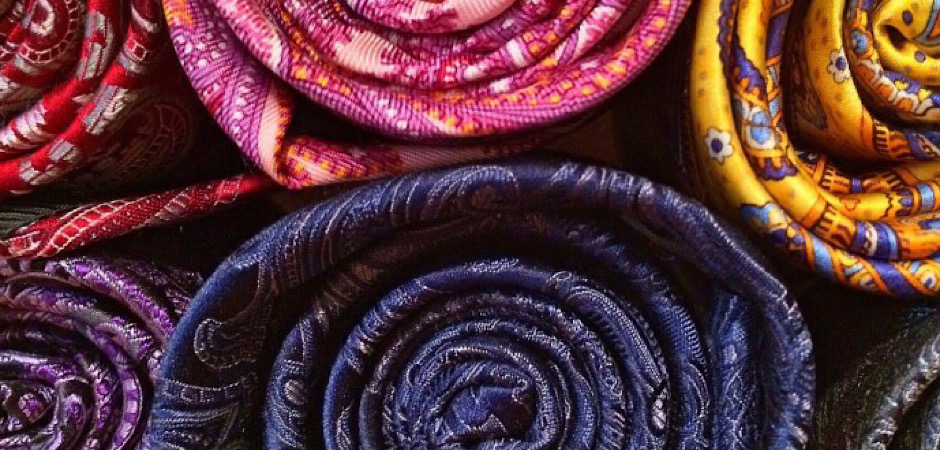
Explore la bellezza of Italy.
Como is a city near Lake Como, in the northern region of Lombardy, Italy. Known for its breathtaking and picturesque sceneries, it is also known for its silk. In fact, it’s called the Silk City.
In 1400, Ludovico Sforza, Duke of Milan, had the idea to plant mulberry trees around Lake Como, to feed the silkworms. The mulberry trees as well as the ample supply of water from the lake and alpine streams allowed for an abundance of silk. By the 18th century, Como had become Italy’s largest silk producer. By 1972, it out-produced both China and Japan.
Today, in Como, and surrounding areas, there are approximately 1,000 family-run businesses engaged in the silk and textile trade—manufacturing, printing, dyeing, designing, and selling. Today, Como represents 80% of all silk made in Italy, and it provides 90% of Europe’s silk.
The whole region has a passion and dedication to the perfection of the silk craft. Silk ties and scarves are particularly popular in Como. Many of the large designer brands rely on Como’s silk houses. Interesting to note that Italy is also the second largest worldwide producer of textile machinery, including machines for spinning, weaving, knitting and finishing that are exported to more than 100 countries.
If you travel to Lake Como, make sure you visit the Lake Como Silk Museum. The museum tells the history of Como silk, and through exhibits, shows the entire production process of silk making. From the silk worms, to the spinning, dying and looming work, right down to the finished piece.
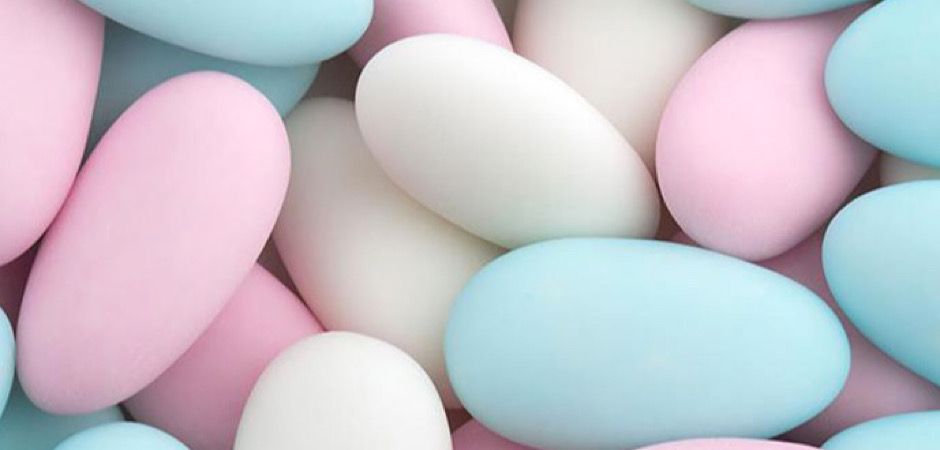
Explore la bellezza of Italy.
If you’ve ever been to an Italian wedding you likely enjoyed some confetti. No, not the paper confetti you throw, but the sugared coated almonds you eat!
Sulmona - the City of Confetti – is world-famous for its confetti. Sulmona, is a city in the province of L'Aquila, in Abruzzo, Italy. It is home to some of the oldest confectioneries in Italy.
It is said that the tradition of serving confetti at weddings started in the 15th century when the nuns at Santa Chiara monastery in Naples, wrapped pieces of almond candy in silk, and gave it to noble brides as a sign of respect.
Today, there is actually a colour code for confetti. Green is used for engagements. White is reserved for weddings, while silver and gold mark silver and gold wedding anniversaries. Yellow confetti is kept for second marriages. But don’t worry, you can also enjoy an array of colourful confetti at other celebrations like Easter or Christmas.
If you visit Sulmona, one of the traditions you will see in shops are the floral confetti bouquets. These beautiful confetti creations are perfect for gift-giving.
Make sure you also visit the Pelino Confetti Museum, which was founded by the Pelino family. Bernardino Pelino founded one of the oldest Italian confectioneries in 1783.
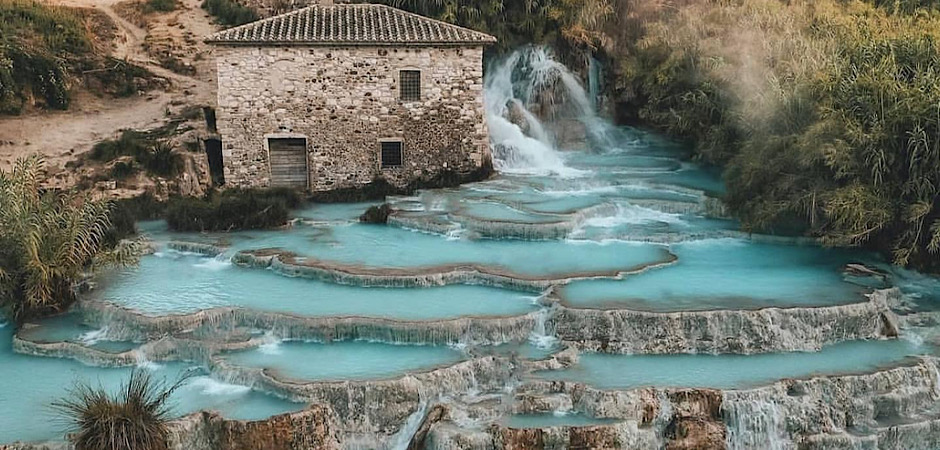
Explore la bellezza of Italy.
Why head to a beach for a January getaway when you can go to Italy, and enjoy natural hot springs and thermal baths.
Natural thermal water can be found underground throughout almost all of Italy. It bubbles up to the surface in the form of hot springs creating hot pools and steaming baths. The water is naturally rich in sulfur and other minerals and said to have many health benefits.
Just imagine soaking in a hot spring surrounded by beautiful landscapes. Here are some popular hot springs and thermal baths that you can enjoy when taking a break from sightseeing in Italy.
The town of Saturnia holds Italy’s most famous collection of thermal baths: Cascate del Mulino, located in the hills of Maremma in southern Tuscany. The temperature of the water stays at 37.5°C all year long.
Located in the Villa Cedri Thermal Park, the Cola natural hot springs are hidden amongst a forest of old cypress and cedar trees near Italy’s largest lake, Lake Garda.
Bagni di Petriolo hot springs are hidden in a forest between Siena and Grosseto, with an average temperature of 42°C all year long. It is situated beneath ancient Roman bath ruins that date back to 1230.
Calabria is home to the Grotta delle Ninfe hot springs located in a cave in the historic area of Cerchiara. The cave is made of limestone rock formations and the average temperature of the water is 30°C.
Located at the base of a volcano in the Eolie Islands of Sicily, is the Terme di Vulcano hot spring. A unique feature of this hot spring is the warm, relaxing mud which feels wonderful on the skin.
So, what are you waiting for? Jump in!
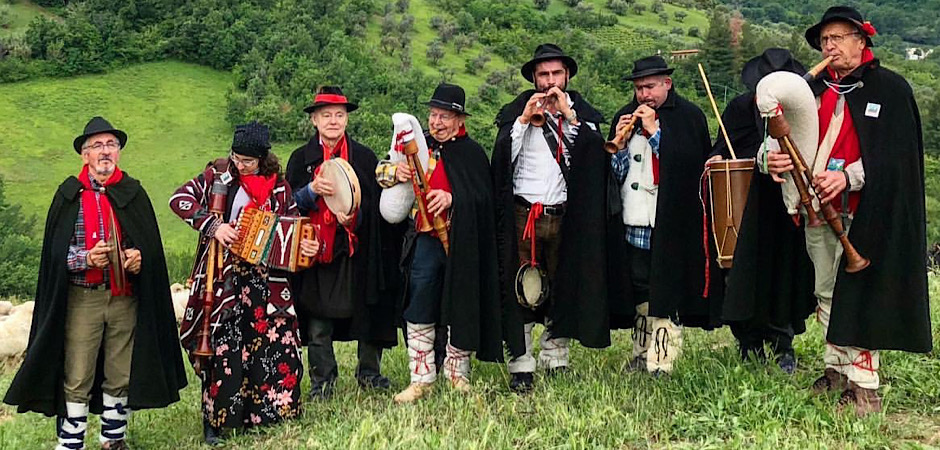
Explore la bellezza of Italy.
If you are lucky to be in Italy during the Christmas season, you just might get a chance to see and hear the zampognari playing the zampogna throughout the streets and squares of small towns.
The zampogna is a wind musical instrument similar to a traditional bagpipe. It is played by the zampognari, bagpipe-playing shepherds. The zampognari were originally shepherds who came down from the hills at Christmas to celebrate with their families and entertain people in the villages.
Today, the festive tradition continues with the pipers dressed in customary woolen cloaks and peaked hats, and playing traditional music and hymns including the much-loved Italian carol, Tu Scendi dalle Stelle. The music played on the zampogna is often accompanied by a ciaramella, a wind instrument similar to the oboe.
The regions where you’re most likely to see a piper are Abruzzo, Basilicata, Campania, Calabria, Molise, Puglia and Lazio.
While in Italy, if you look closely at nativity scenes in window displays you will likely see the zampognari.
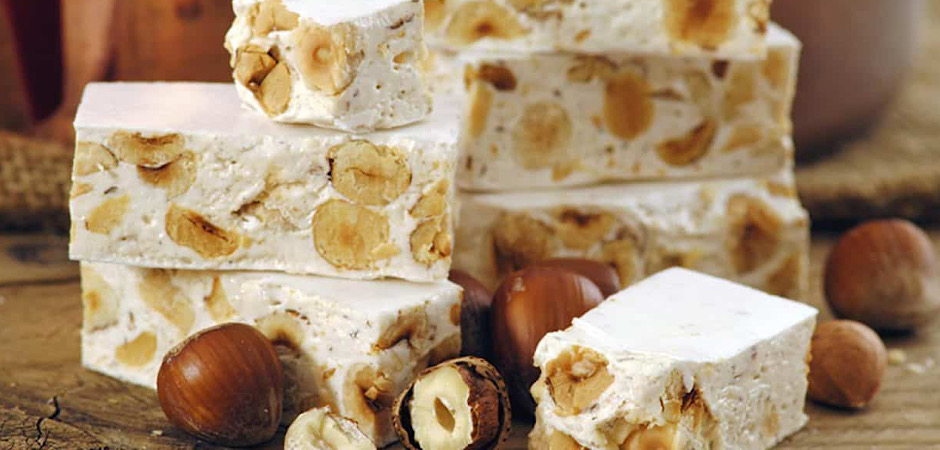
Explore la bellezza of Italy.
The Festa del Torrone or Nougat Festival is held annually in Cremona, a city in the region of Lombardy, northern Italy. The festival runs November 12-20, 2022.
Torrone is a customary Italian Christmas dessert. It is a nougat confection traditionally made with vanilla, eggs, honey, almonds, and hazelnuts, but today also comes in a variety of flavours including lemon, orange, pistachio, chocolate, and chocolate covered. Torrone can be either soft and chewy, or hard and crunchy.
Cremona is Italy’s capital of the torrone. According to local legend, the torrone was created for the wedding feast of the Duke and Duchess of Milan in 1441, and was modelled after the bell tower of the cathedral in Cremona. Torrone cremonese is one of the most well-known nougats in Italy.
The festival gathers over 150 nougat producers from Italy and other countries. It features shows and entertainment, tastings, cooking demonstrations, historical parades and plenty of activities for children.
This holiday season treat your family and friends to delicious torrone!
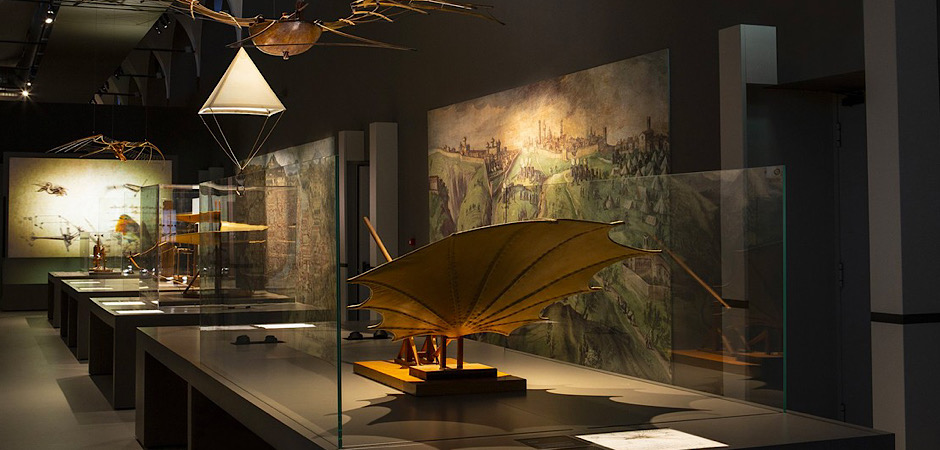
Explore la bellezza of Italy.
If you find yourself in Milan, make sure you visit the Leonardo da Vinci Galleries located in the Museum of Science and Technology of Milan. It is the largest permanent exhibition in the world dedicated to Leonardo da Vinci.
Leonardo da Vinci was born on April 15, 1452, near Florence, in the town of Vinci, which provided his surname. He died on May 2, 1519. He was a painter, sculptor, architect, designer, theorist, engineer and scientist. He painted 22 paintings including two of his famous works: Mona Lisa and the Last Supper.
Gifted with a curious mind and a brilliant intellect, his notebooks were filled with inventions, observations and theories about pursuits from aeronautics to human anatomy that were centuries ahead of their time.
The Leonardo da Vinci Galleries will take you through a journey exploring 170 historical models, works of art, antique volumes and 39 multimedia installations that bring the exhibition’s narrative to life.

Explore la bellezza of Italy.
This year marks the 79th anniversary of the Venice International Film Festival. The world’s oldest film festival is held annually in Venice, this year running from August 31st to September 10th.
The Venice Film Festival was founded in 1932 and is organized by La Biennale di Venezia. It is held on the island of Lido, in the beautiful Venice Lagoon.
It is one of the top five film festivals worldwide. Some of the most anticipated films of the year will premiere in Venice. This year, 21 feature-length films will be presented as world premieres with screenings in the historic Palazzo del Cinema.
The prestigious Golden Lion award is given to the best film awarded by a jury that is appointed every year. The jury is comprised of actors, directors, producers and screenwriters.
There is no shortage of events and parties during the film festival. Every night there are interviews and meetings with filmmakers and actors, and venues remain open all night with parties in beautiful palaces and gardens throughout Venice.
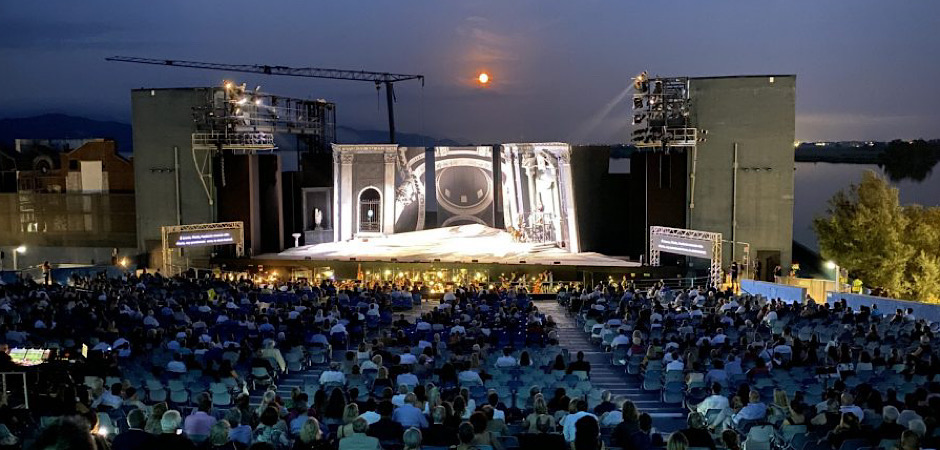
Explore la bellezza of Italy.
If you find yourself in Tuscany in August, and you love opera, be sure to get a ticket to the annual Festival Puccini. This year marks the 68th festival. It is held in the town of Torre del Lago in the province of Lucca.
The Puccini Festival is the most famous opera festivals in Italy, dedicated to the composer Giacomo Puccini. Italy’s most celebrated composer, Puccini was born on December 22, 1858, and died November 29, 1924. He was descended from a long line of composers. Puccini wrote orchestral pieces, sacred music, chamber music, solo music for piano and organ, and songs for voice and piano, but he was primarily known for his 12 operas.
The festival attracts around 40,000 attendees. It is held in an open-air theatre, a short distance from the Villa where Giacomo Puccini lived and worked. He is buried in a small chapel inside the Villa.
This year’s festival celebrates four of Puccini’s most important works: Madama Butterfly, Tosca, Turandot and La Rondine. Thirteen evenings dedicated to opera and dance, symphonic concerts and emerging talents against the backdrop of the enchanting landscape of Lake Massaciuccoli.

Explore la bellezza of Italy.
When in Rome, you should visit one of the most curious sculptures in Rome: Bocca della Verità or Mouth of Truth.
La Bocca della Verità is a massive marble mask. And what makes this sculpture so curious is that anyone who inserts their hand into the mouth and utters a lie will immediately lose their hand. At least that’s according to legend.
The marble mask dates back to the Roman Empire. It is located in the portico of the Santa Maria in Cosmedin church, near the ancient Roman ruins. It weighs about 1,300kg or 2,866lbs, with a diameter of about 1.75m.
The Mouth of Truth became more popular from its appearance in the 1953 film, Roman Holiday staring Audrey Hepburn and Gregory Peck. It was used as a storytelling device since both characters were not initially truthful with each other. Today, tourists line-up to take a photo and perhaps test the legend.
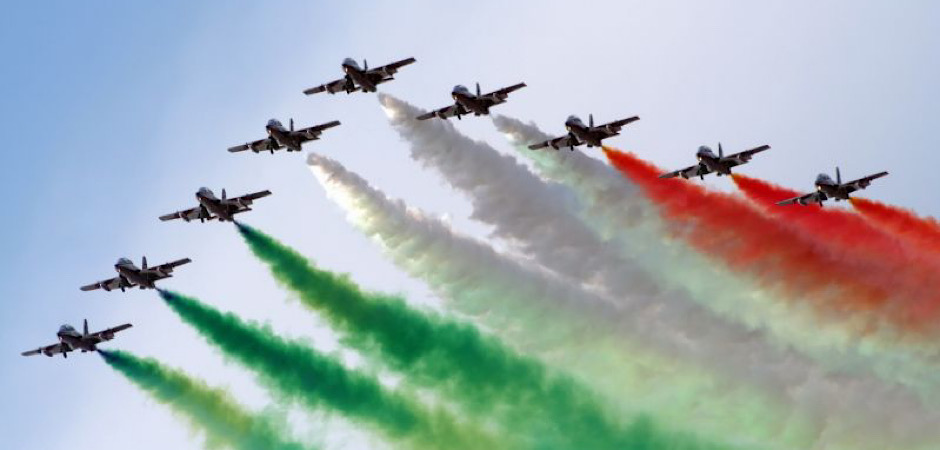
Explore la bellezza of Italy.
La festa della Repubblica or Republic Day is a national holiday in Italy, held every year on June 2nd.
It is an important holiday for Italians as it commemorates the day, June 2, 1946, when Italy held its first referendum to vote what form of state it wanted: Monarchy or Republic.
The referendum was held following the Second World War and the fall of Fascism. The King of Italy, Umberto II of Savoy, was the last monarch to rule Italy.
The first celebration of the Festa della Repubblica took place on June 2, 1947.
Today, the main celebration takes place in Rome, with two main events: the military parade and the laying of a wreath at the Tomb of the Unknown Soldier. The military parade takes place on Via Dei Fori Imperiali, a road in the centre of the city of Rome.
After the playing of Italy’s national anthem Il Canto degli Italiani, a prestigious group of fighter jets in the Italian Air Force perform the Frecce Tricolori aerobatic show. They fly above Piazza Venezia billowing out streams of red, green, and white smoke in the pattern of the Italian flag.
All over the world, Italian embassies organize ceremonies to which the Heads of State of the host country are invited.
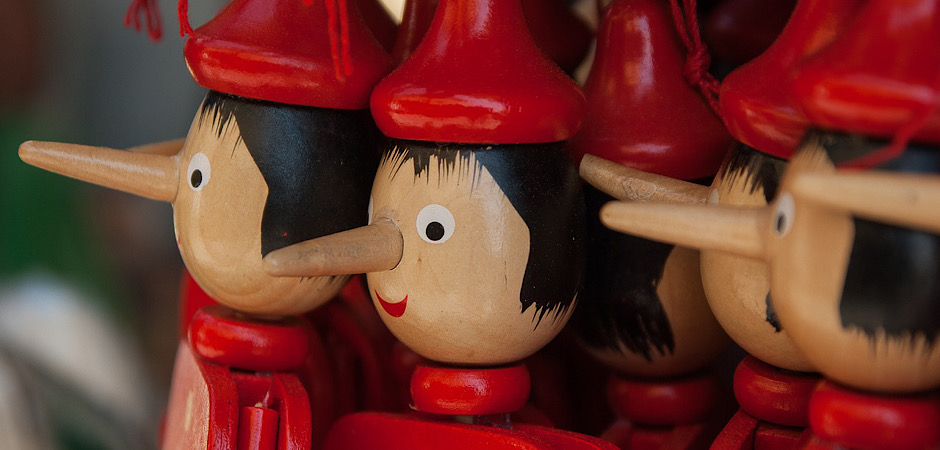
Explore la bellezza of Italy.
Many of us have grown up with the story of Pinocchio. Set in Tuscany, the tale recounts the mischievous adventures of an animated marionette puppet called Pinocchio and his father, the poor woodcarver Geppetto.
Before its publication as The Adventures of Pinocchio in 1883, Carlo Collodi’s magical story appeared in serial form in a weekly children’s supplement to the newspaper Il Fanfulla.
The author, Carlo Lorenzini, used the pen name Carlo Collodi in honour of his mother’s Tuscan village: Collodi.
Each May, Pinocchio’s fictional birthday is celebrated in the town of Collodi, in Pescia,Tuscany. The town has an interactive Pinocchio Park, which was built in 1956. The park is a great place to spend the day with family surrounded by greenery, art and architecture, and to introduce children to the Italian fairy tale.
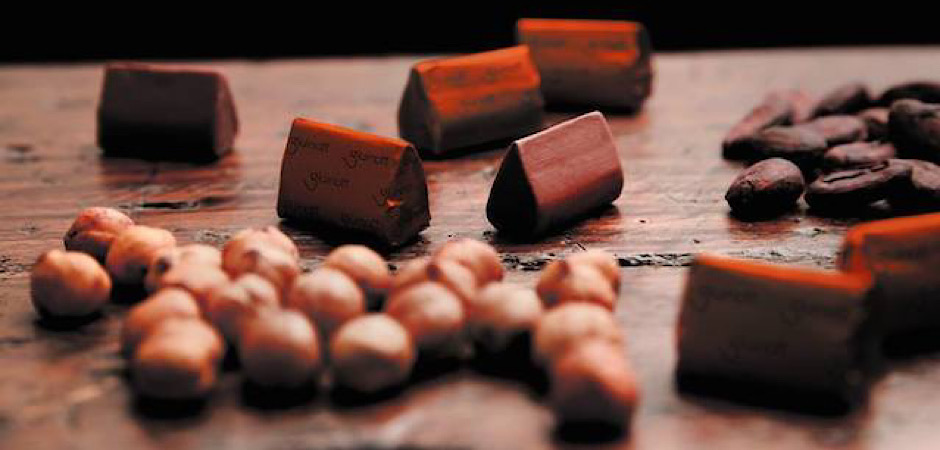
Explore la bellezza of Italy.
Turin is the Italian city of chocolate. It is where the long tradition of chocolate masters began, dating all the way back to 1560. Turin is the capital of the Piedmont region of northern Italy.
It was in Turin, in the eighteenth century that the bicerin was born - a beverage made of espresso, drinking chocolate, and milk, served layered in a small glass. It is the official drink of Turin, and this delicious beverage is still enjoyed today, in Turin’s many cafes.
In 1865, the famous gianduiotto was created. Shaped like ingots, it is the chocolate symbol of Turin. The magic ingredient is the Langhe hazelnut, a specialty of Piedmont.
In 1964, Pietro Ferrero, a pastry chef in Turin, created the legendary chocolate spread – Nutella. The hazelnut and cocoa cream spread that today is enjoyed by millions all over the world.
Throughout Turin, you will see old workshops of chocolatiers who pass down the tradition to the next generation of chocolate masters.
Today, the Piedmont region produces about 40% of the chocolate in Italy.
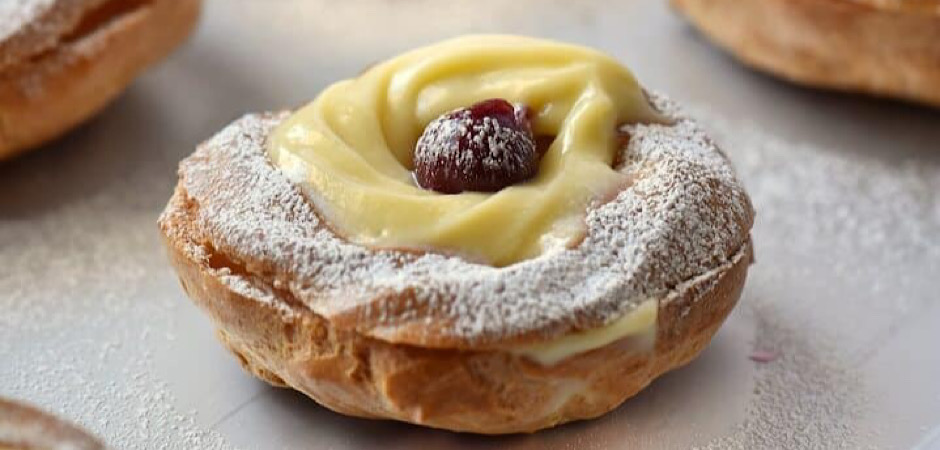
Explore la bellezza of Italy.
La Festa Di San Giuseppe, or the feast of St. Joseph, is celebrated throughout Italy on March 19th. The day honours Saint Joseph, the earthly father of Jesus, and is known as Father's Day. The day is reserved to celebrate fathers, fatherhood and father-figures.
Until 1977, it was a public holiday in Italy. Traditions vary across the regions of Italy. Cards are made and small gifts are purchased. Most families go to mass and then gather around the table to enjoy a meal. Many cities and towns hold street processions and musical events as well as bonfires.
As with any special occasions in Italy, food is central to the celebration. A traditional dish that is enjoyed by many is Pasta Milanese with key ingredients: bucatini pasta, breadcrumbs, anchovies and tomato sauce. Another favourite dish is Maccu - a traditional fava bean soup. But by far, the most popular dessert for Italy’s Father’s Day is the Zeppole - a sweet pastry filled with custard and topped with black cherries.

Explore la bellezza of Italy.
Venice: the city of amore, the city of romance. Once you meet Venice you will fall in love. And who could not resist the charm, the ambiance, the promise of romance? Take a romantic gondola ride along the Grand Canal. Walk the cobblestones in Piazza San Marco. Enjoy an afternoon aperitivo at a quiet bar. Experience the passion of an opera at La Fenice opera house.
And don’t forget to take your love on a gondola ride to the Ponte dei Sospiri - Bridge of Sighs. It will literally take your breath away. Venice has over 400 bridges and the Bridge of Sighs is one of the most popular, especially for the romantics. The bridge is located next to the Palazzo Ducale. The baroque-style bridge, made of white limestone, was built in 1602 by architect Antonio Contin, the nephew of Antonio da Ponte who designed another popular bridge in Venice – the Rialto Bridge.
So why is the Bridge of Sighs a romantic destination? According to legend, if lovers kiss on a gondola ride at sunset while passing under the bridge as the bells of San Marco's Basilica toll, the lovers will be granted eternal love.
What better city than Venice to celebrate amore?
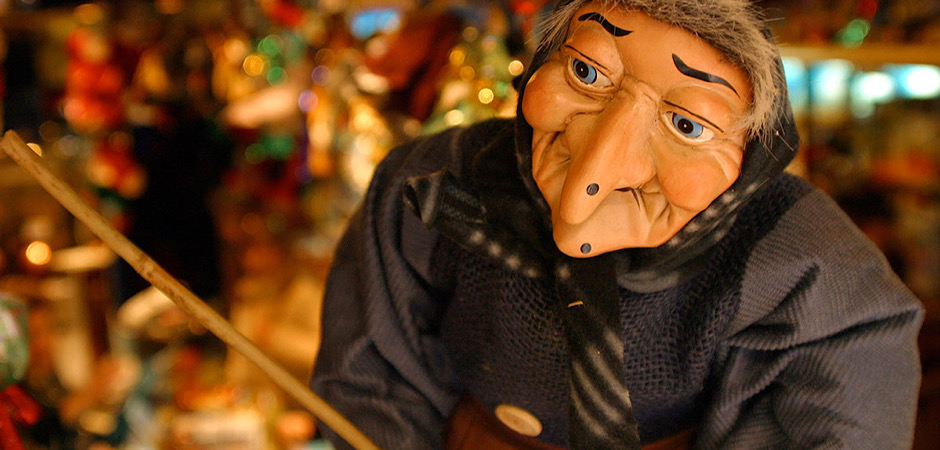
Explore la bellezza of Italy.
In Italian folklore, la Befana is a grandmotherly woman who brings good children treats on the morning of the Epiphany, January 6th.
In Italy, the Epiphany marks the official end of the Christmas season, commemorating the day when the three wise men arrived at the manger bearing gifts for baby Jesus.
According to the Italian legend, la Befana declined to join the wise men on their journey to see the baby Jesus. When she regrets her decision, she sets out to bring gifts to the child but never finds him. Instead, she leaves gifts for other children.
Throughout Italy, on the eve of la Befana, children leave out their shoes or put up stockings for the Befana, to fill them with treats and small gifts. La Befana rides on a broom delivering treats to each household. Well-behaved children find colourful candies in their stockings, while the misbehaved ones find coal. But not to worry, it’s “candy coal” (edible and sweet!).
January 6th is a national holiday in Italy. La Befana is celebrated across Italy, with street markets, parties and games for children. Many towns and villages have processions ending with a living nativity scene, where costumed people act out the parts of the nativity. Women and men also dress up as la Befana giving candies to the children.
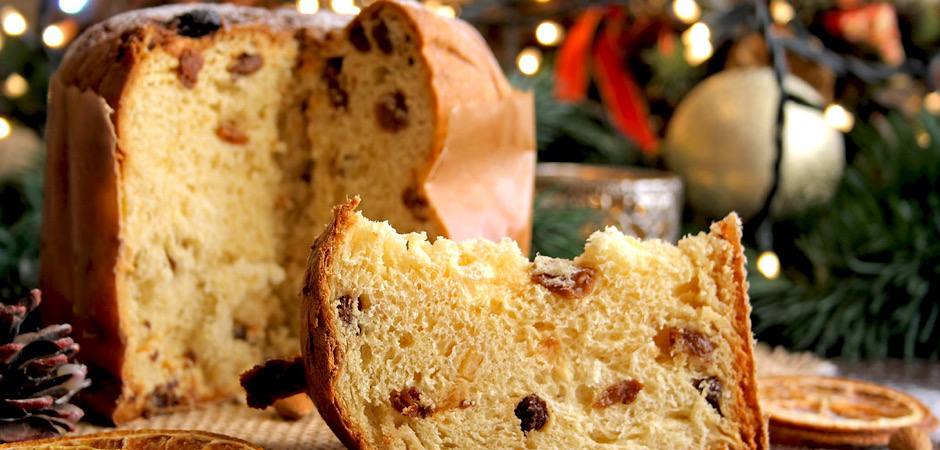
Explore la bellezza of Italy.
In Italy, a gathering over the Christmas holidays would not be complete without enjoying a slice or two of panettone. Known as Italy’s signature Christmas cake, panettone is a type of sweet bread originally made with dried raisins, candied orange and lemon peel.
Panettone originated in 15th century Milan, and today is not only enjoyed in Italy, but all over the world.
Panettone combines the moistness of a cake with the texture of bread. The outside has a slight crust and the interior is melt-in-your-mouth soft. Available in a variety of flavours from wild berries, chestnut, chocolate, fig, pistachio, and lemon-infused limoncello – just to name a few. Is your mouth watering yet?
Excellent on its own, panettone is also delicious served with fresh berries, drizzled in dark chocolate, a scoop of ice cream or slathered in various sweet marmellata spreads.
You can pair it with a glass of vino or a cappuccino. And don’t forget to save some slices for breakfast because it makes for delicious French toast. Buon appetito!
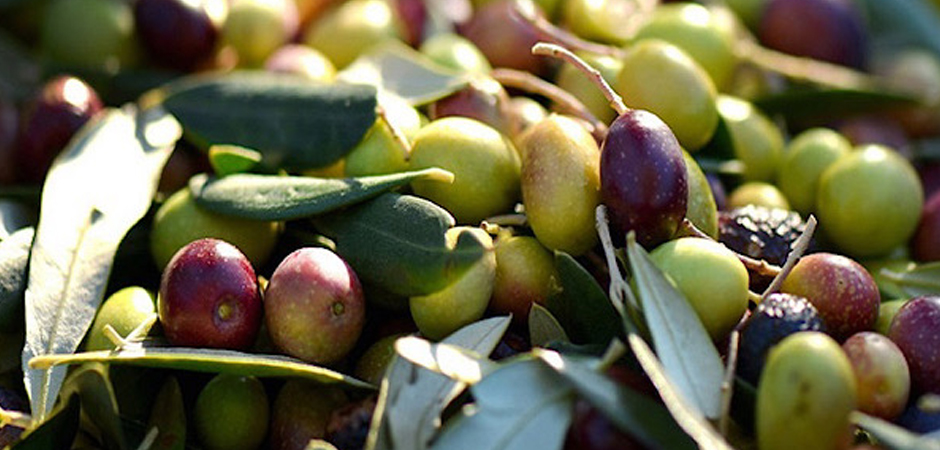
Explore la bellezza of Italy.
The Olive Harvest - la raccolta delle olive – runs from late October to early December from Tuscany to Sicily. The region of Puglia, in southern Italy, is the most important olive growing area with 60 million olive trees and accounts for almost half of all olives harvested in Italy.
If you find yourself driving or walking along the countryside in Puglia, during harvest season, you will see farmers and workers under olive trees with rakes or on ladders shaking branches. Unlike other fruit, olives are removed from trees by shaking rather than picking. You will see large nets under trees ready to catch the olives as they fall from the branches.
There are 400 known varieties of olives in Italy! The extra-virgin olive oil produced in Puglia is recognized to be the best in the world. Olives are not only used for olive oil but you can also enjoy eating them right out of the jar.
Did you know that olives are also used in skincare products? Olive oil as well as olive leaf extracts is infused in skincare products which help your skin stay hydrated and moisturized.
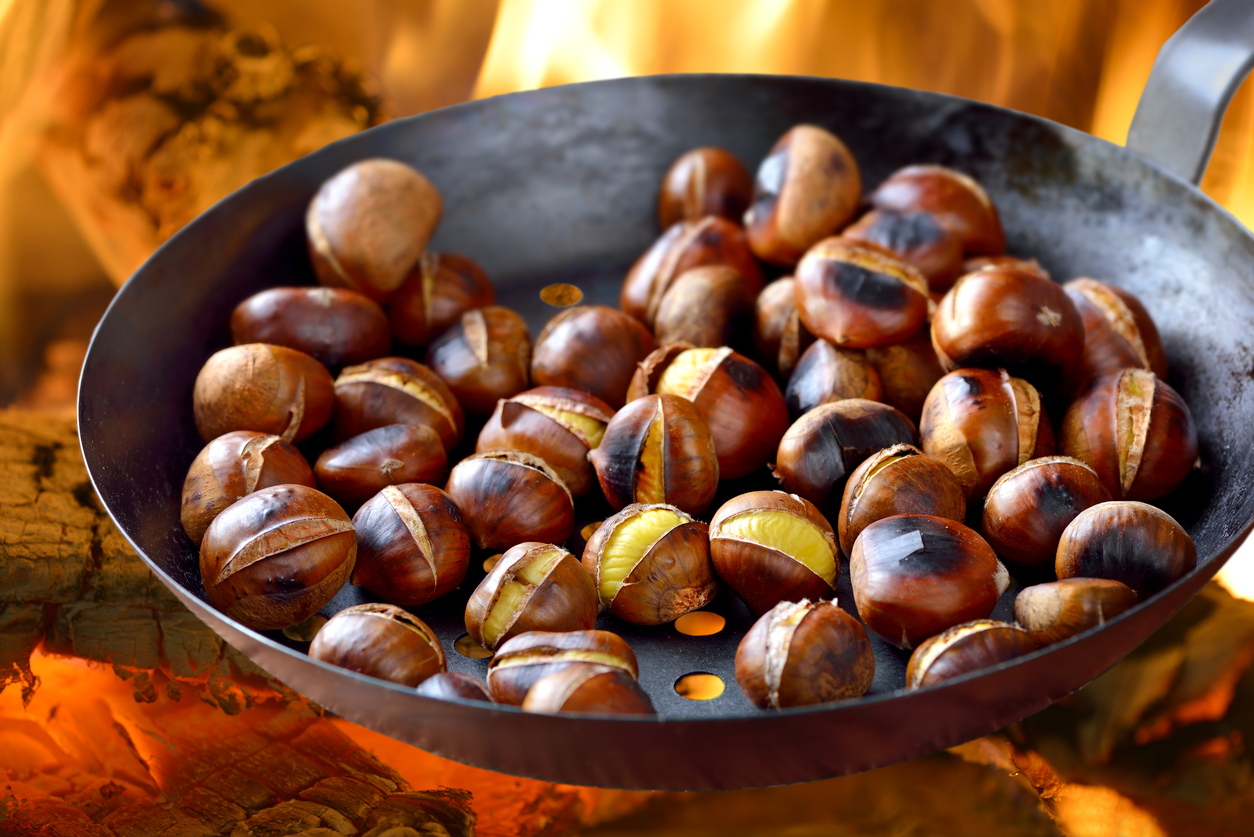
Explore la bellezza of Italy.
The Cuneo Chestnut Fair – Fiera Nazionale del Marrone – is held every October in the city of Cuneo, Piedmont, in northern Italy. It is a festival to celebrate the chestnut harvest season.
As one of the largest fairs in the Piedmont region, it also showcases regional cuisine and culture with over a hundred exhibitors. There are cooking demonstrations, workshops, music concerts and cultural performances.
Although the Chestnut Fair dates back to the 1930s, it was not until 1999, that the fair was reinstated and is now held annually. The festival draws over 100,000 visitors from the area.
Every year, approximately 30,000 kilograms or 200,000 cone paper bags of chestnuts are eaten. If you’ve never eaten roasted chestnuts, your taste buds will thank you. Buon appetito!
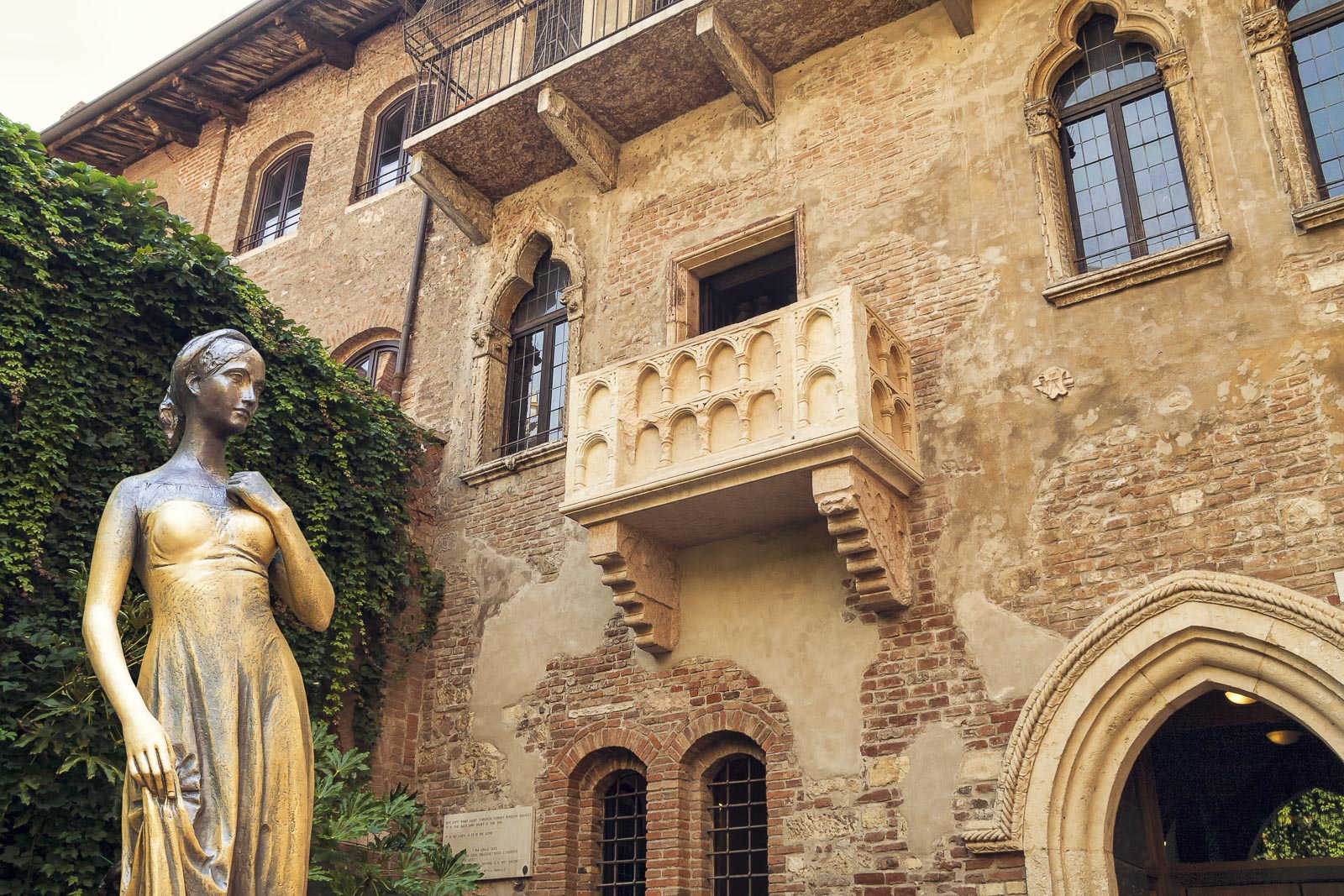
Explore la bellezza of Italy.
The birthday of Giulietta Capuleti – Juliet Capulet – is celebrated in Verona, on September 16th. Juliet is William Shakespeare’s most famous literary heroine from the play Romeo and Juliet which takes place in Verona.
The day is celebrated with carnivals, costumed performances and concerts.
One of the main organizers is the Club di Giulietta or the Secretaries of Juliet. Every year, the club receives 50,000 letters from people all over the world, sharing their love stories or asking for advice. Forty-five volunteers from the club translate and answer every letter. The club was officially formed in 1972.
When tourists arrive in Verona, a popular spot to visit is Juliet’s house. Shakespeare’s love story was fictional, but the 13th century home was owned by the Dal Capello family, known as the Cappelletti, which is similar to Capuleti. The house is complete with a balcony and a statue of Juliet in the courtyard. The covered passageway to the house is covered with love letters to Juliet.
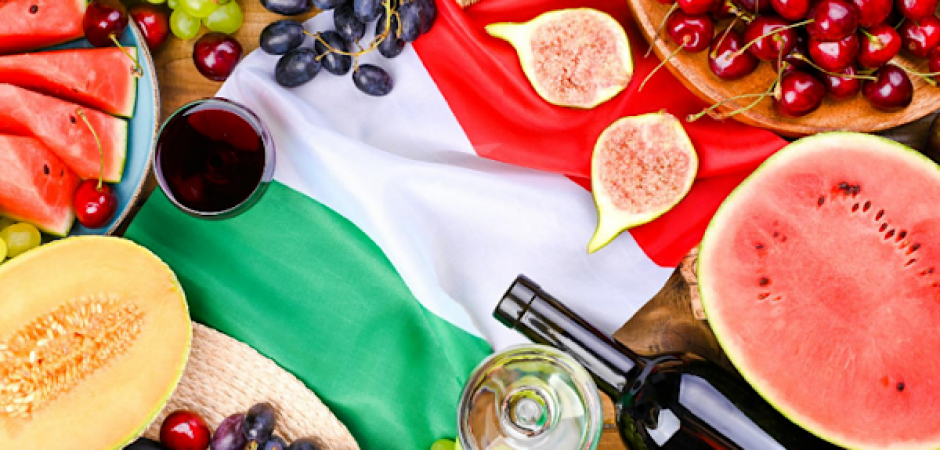
Explore la bellezza of Italy.
Ferragosto is a national holiday in Italy, celebrated every year on August 15. The Italian name for the holiday comes from the Latin Feriae Augusti (the festivals of the Emperor Augustus) which were introduced back in 18 BC. Italians throughout Italy mark the day as the peak of summer and the start of vacation.
August is typically a hot month in Italy, so families and friends head to the beach or the mountains. And as with many Italian holidays, food is central and that’s no different for Ferragosto where picnic baskets are overflowing with cibo and vino.
Ferragosto traditionally also marked the end of the harvest season, when friends and family gathered together to enjoy the fruits of their labour. It was customary for agricultural workers to take a well-deserved break after the harvest.
However and wherever you’re spending your summer vacation, we wish you a buon ferragosto!
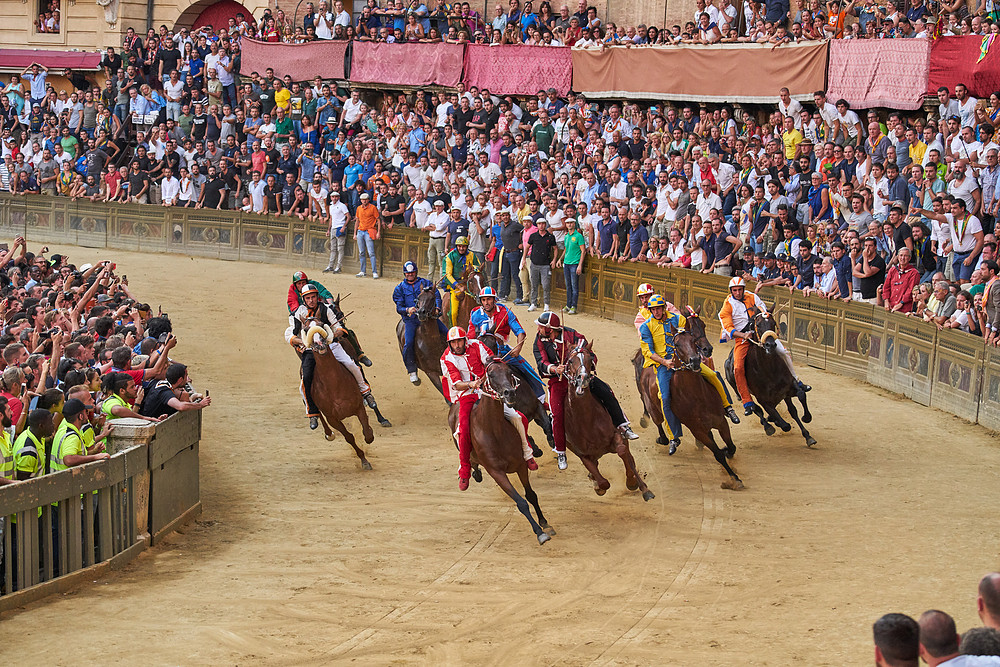
Explore la bellezza of Italy.
The Palio di Siena is Italy’s most famous historical horse race. It takes place twice a year, on July 2 and August 16, in the Piazza del Campo, Siena’s medieval city square. The first Palio was held in 1659.
Although the actual race lasts about 90 seconds, festivities go on for four days. Siena is divided into 17 neighborhoods, or contrade, and 10 participate in the Palio. Each contrada has its own mascot and a distinctive flag. Each contrada hires a jockey to dress in 15th-century costume in its colours.
In the evenings, the streets are filled with eating, drinking, singing, and camaraderie. On the day of the Palio, there’s a splendid parade with over 600 participants of the contrade dressed in historical costumes as well as drummers and flag throwers.
The Palio prize is the drappellone, a large painted silk canvas designed and created each year by a different artist.
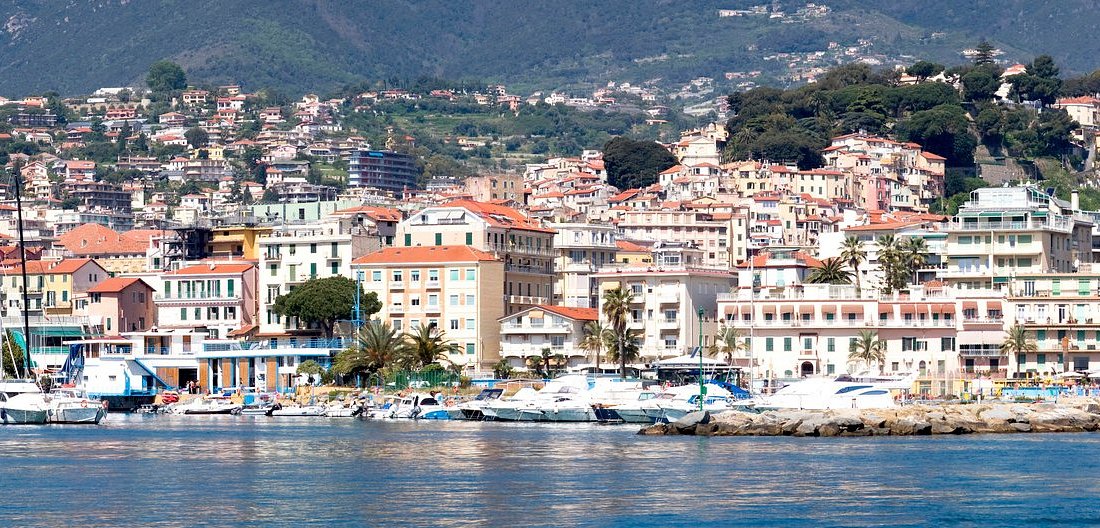
Explore la bellezza of Italy.
Sanremo is a city on the Italian Riviera. A popular Mediterranean resort with boulevards lined with grand villas and lush gardens. Clusters of medieval houses surround the centre of town. It is known as the city of flowers, for its famous cultivation of colorful roses and carnations.
And since 1951, Sanremo hosts the renowned Sanremo Music Festival, held yearly in February. The Ariston Theatre has presented the festival since 1977, launching the successful musical careers of Andrea Bocelli, Laura Pausini, Eros Ramazzotti, and Zucchero, just to name a few.
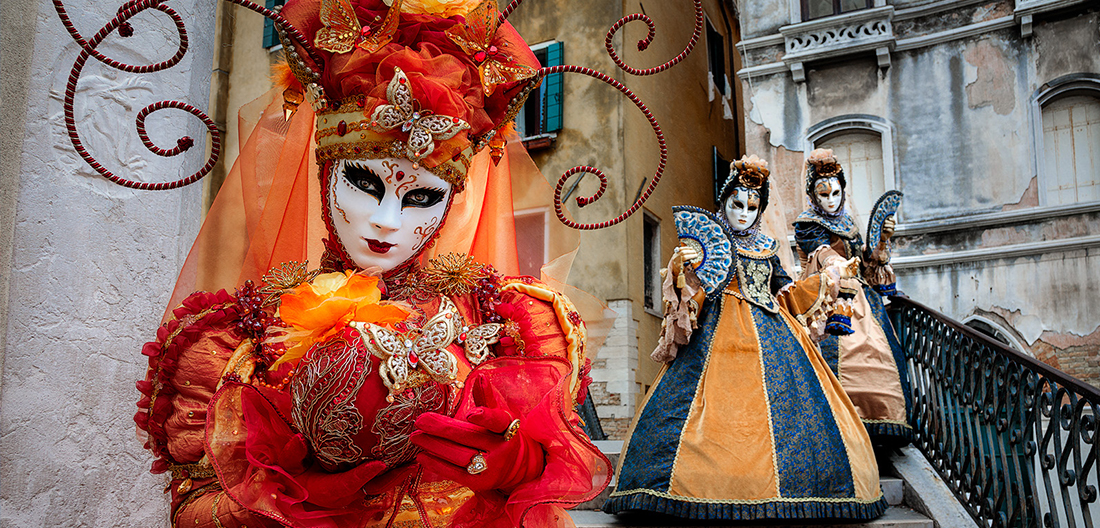
Explore la bellezza of Italy.
Carnevale di Venezia is a grand festival that dates back to 1296, but has been annual since 1979.
The festival usually runs the two weeks before the start of Lent. From spectacular water shows and exciting acrobats and music performances, to sweet and savory foods with plenty of vino, to masquerade balls and elaborate colourful masks, citizens and international visitors celebrate on the streets and piazzas of Venice. It is a world-famous festival that transforms Venice into a magical carnival.

Explore la bellezza of Italy.
Cortina d’Ampezzo, the Queen of the Dolomites is nestled at the foothills of the magnificent Italian Alps. With a rich history going back more than a thousand years, it continues to preserve its natural backdrops – the lush green of the forests and meadows, the pristine white of snow, and the clear blue of the sky. After hosting the 1956 Winter Olympics, Cortina was established as a prestigious destination for winter sports.
To celebrate the Queen of the Dolomites for the Alpine World Ski Championships in February 2021, Acca Kappa launched a new fragrance, Sfaria. In the Ladin-Ampezzan language spoken in Cortina d’Ampezzo, “Šfarìa” is the word for thin, powdery snow.